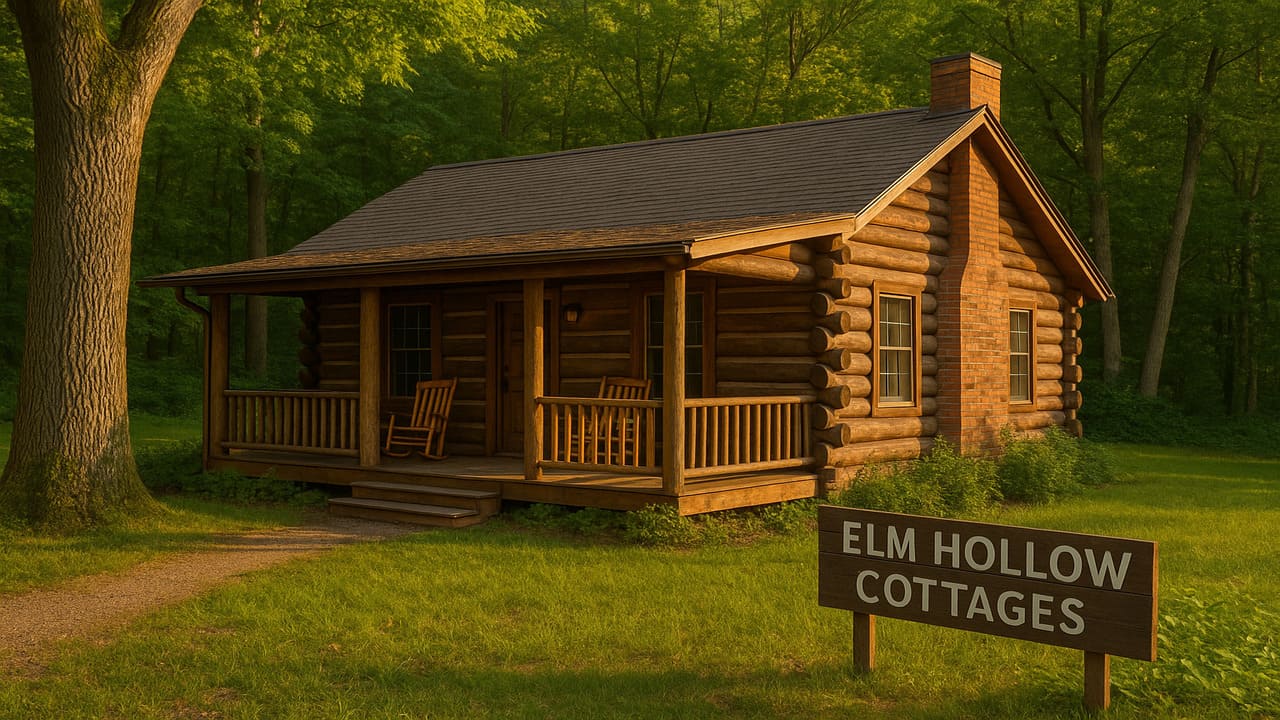
Visit MarkTwain Lake – Elm Hollow Cottages offers more than a place to stay it’s an experience steeped in Missouri’s natural beauty and small-town charm. With its rustic cottages, whispering elm trees, and the echoes of Mark Twain’s legacy lingering in the breeze. This secluded retreat invites travelers to slow down and reconnect with nature, with community, and with themselves.
Elm Hollow Cottages is not a large-scale resort. It’s an intentionally intimate space six cozy cottages build with local cedar and elm wood. Design to blend with the rolling hills and lush green surroundings. Each cottage features wide porches with rocking chairs, screened windows to let in fresh forest air. And also a simple interiors inspired by old Missouri farmhouses.
From your front porch, you’re likely to see deer pass by at dawn. Hear the distant call of loons from the lake, or watch mist rise from the tree line as the sun breaks over the horizon. It’s this natural rhythm that defines the Elm Hollow Cottages experience.
Whether you’re a family looking for a calm getaway or a solo traveler seeking quiet reflection. The environment here slows you down in all the right ways.
Also Read : Sunny Shore Cabins: A Warm Escape by the Water’s Edge near Mark Twain Lake
Though Elm Hollow feels like a private hideaway, it’s only a short drive to some of the area’s most beloved attractions. Mark Twain Lake itself offers abundant opportunities for outdoor activity fishing, kayaking, boating, and swimming are just the beginning. The nearby Joanna Trail winds along the water’s edge, perfect for hikers and birdwatchers alike.
Even closer is the Mark Twain Birthplace State Historic Site in Florida, Missouri. Here, visitors can explore the preserved cabin where Samuel Clemens (Mark Twain) was born. Along with exhibits that reflect the literary and historical legacy of the region. Elm Hollow often welcomes guests who come for this cultural journey and end up staying longer for the peace and hospitality.
Locals in the nearby town of Perry hold seasonal markets, bluegrass nights, and church socials that give guests a genuine taste of Midwest community. It’s not uncommon for travelers to find themselves sharing fresh corn at a roadside stand or being invite to a lakeside potluck.
One of the things that sets Elm Hollow Cottages apart is its commitment to sustainability and local engagement. The owners, a couple originally from Hannibal, repurposed wood from nearby barns and old schoolhouses to build the cottages. Solar panels line the edge of the property, and guests are encouraged to compost food scraps and refill water bottles from filtered natural springs on site.
Inside the cottages, you’ll find decor made by local artisans quilts from Perry’s craft guild. Pottery from a studio in Monroe City, and even books donated from regional authors. Elm Hollow also sources its breakfast offerings like honey, jam, and sourdough bread from surrounding farms.
This conscious blending of hospitality and heritage creates not just comfort, but a sense of place.
While many visitors come during summer for lake activities, Elm Hollow thrives in every season. In fall, the forest explodes in color burnt orange, gold, deep crimson and the crisp air calls for fireside storytelling under the stars. In winter, the cottages become cozy havens with wood-burning stoves, perfect for reading or writing retreats. And in spring, wildflowers bloom along every trail, and the lake teems with new life.
Guests who return often choose different cottages. Each named after a tree native to Missouri Elm, Maple, Hickory, Oak, Sycamore, and Walnut each with a slightly different layout and charm.
One unique feature of Elm Hollow is the “Cottage Journal Project.” Inside every cottage is a bound journal where guests are invited to write their reflections, sketches, poetry, or memories from their stay. Over the years, these books have become time capsules filled with love stories, meditations, children’s doodles, and even local ghost tales.
The idea is simple: leave something behind for the next guest. Some journals have grown so cherished that select pages have been shared with the local historical society.
This ongoing exchange turns visitors into stewards of place, part of a quiet tradition that honors both the land and the people passing through it.